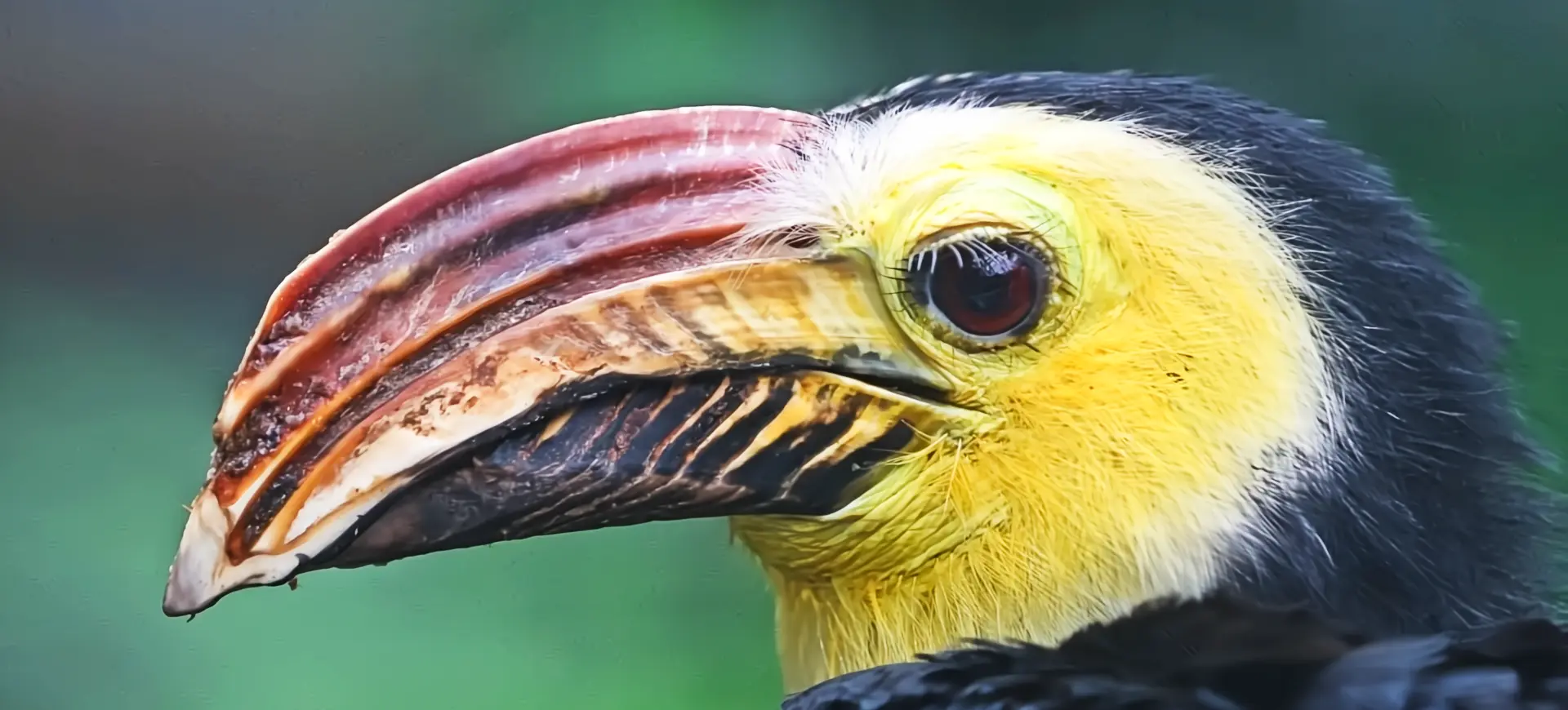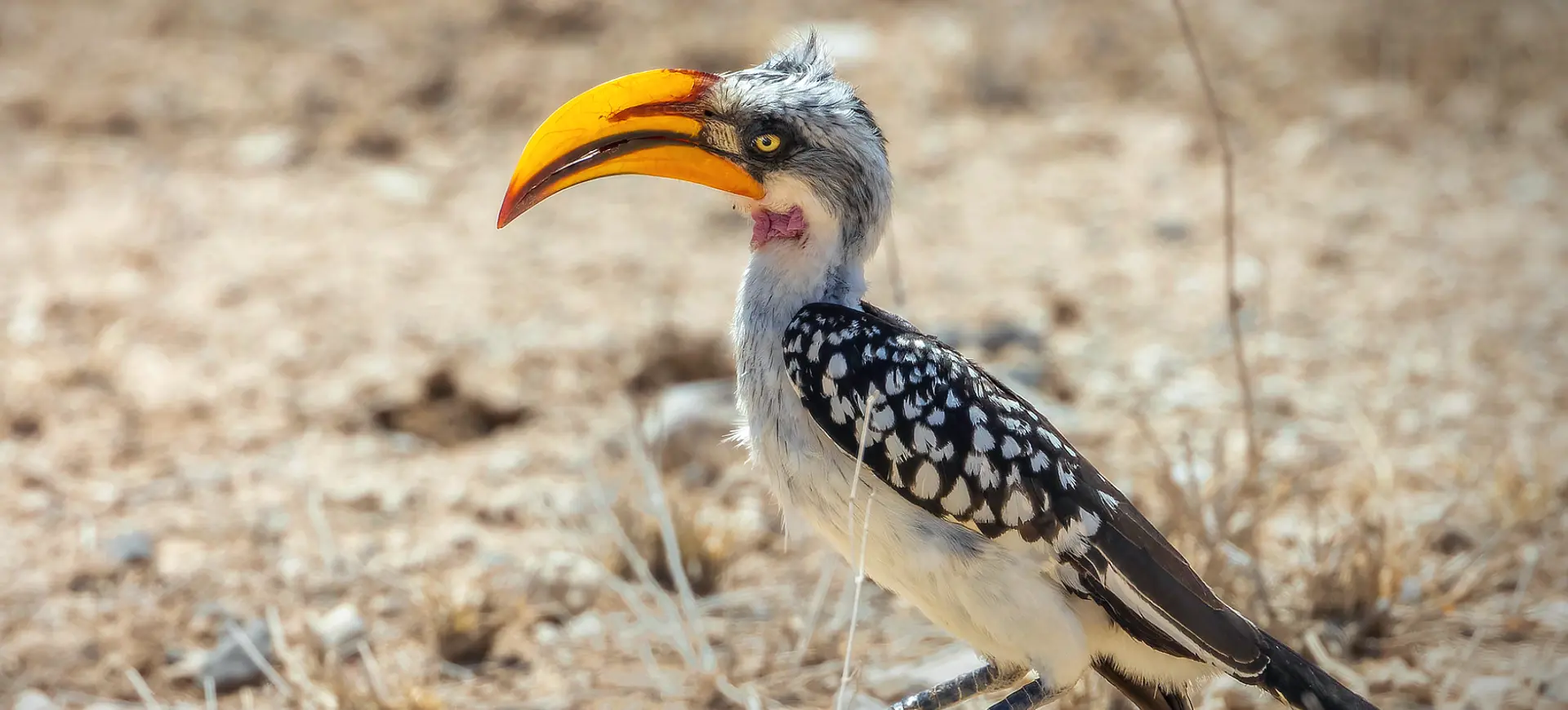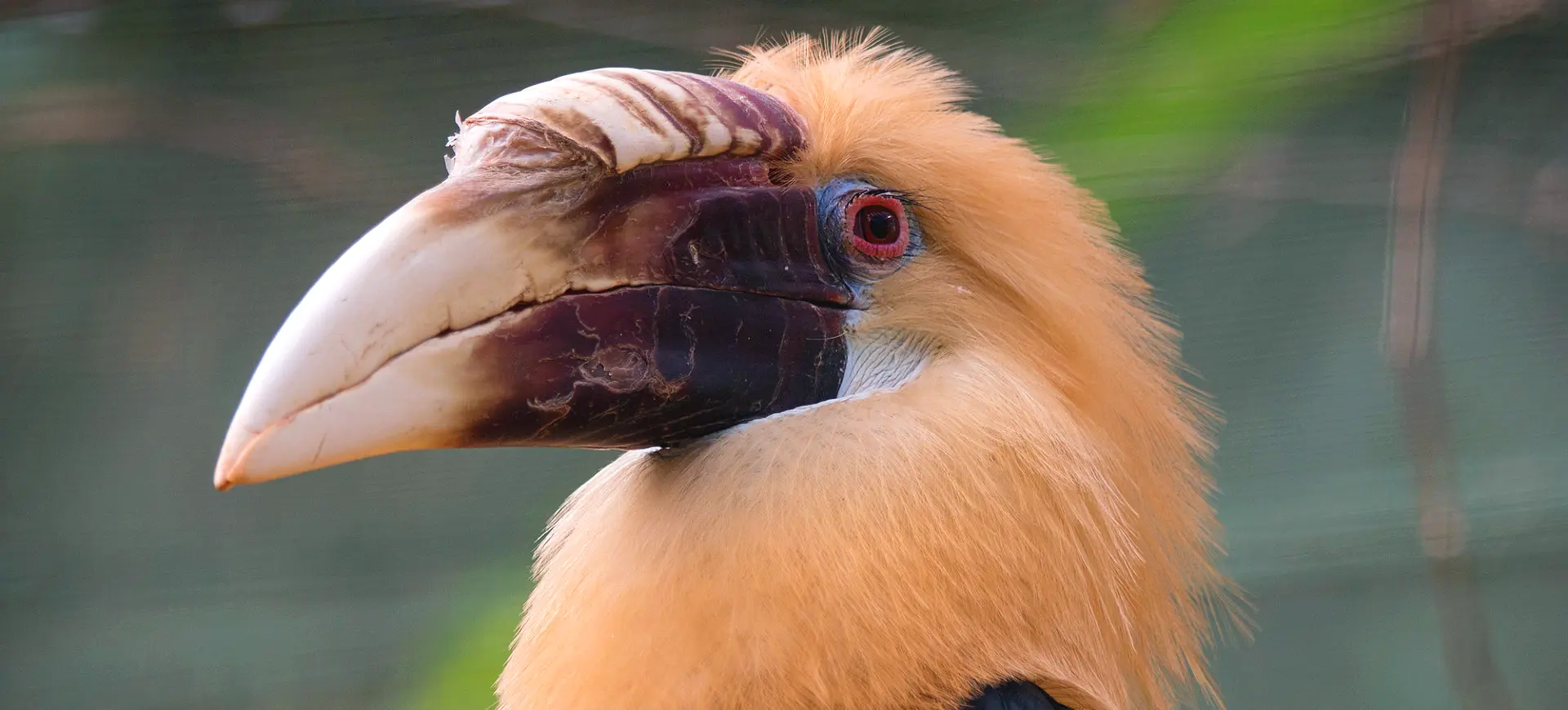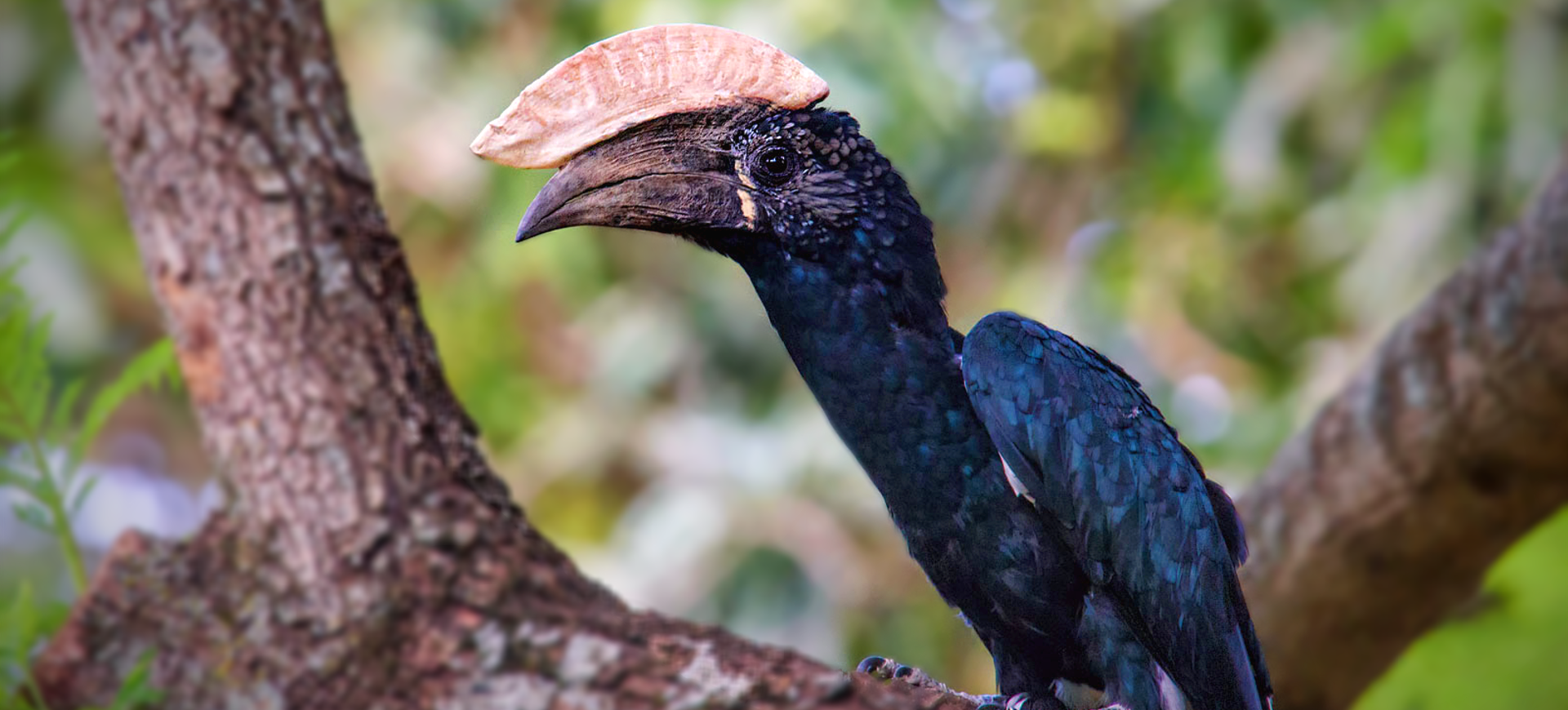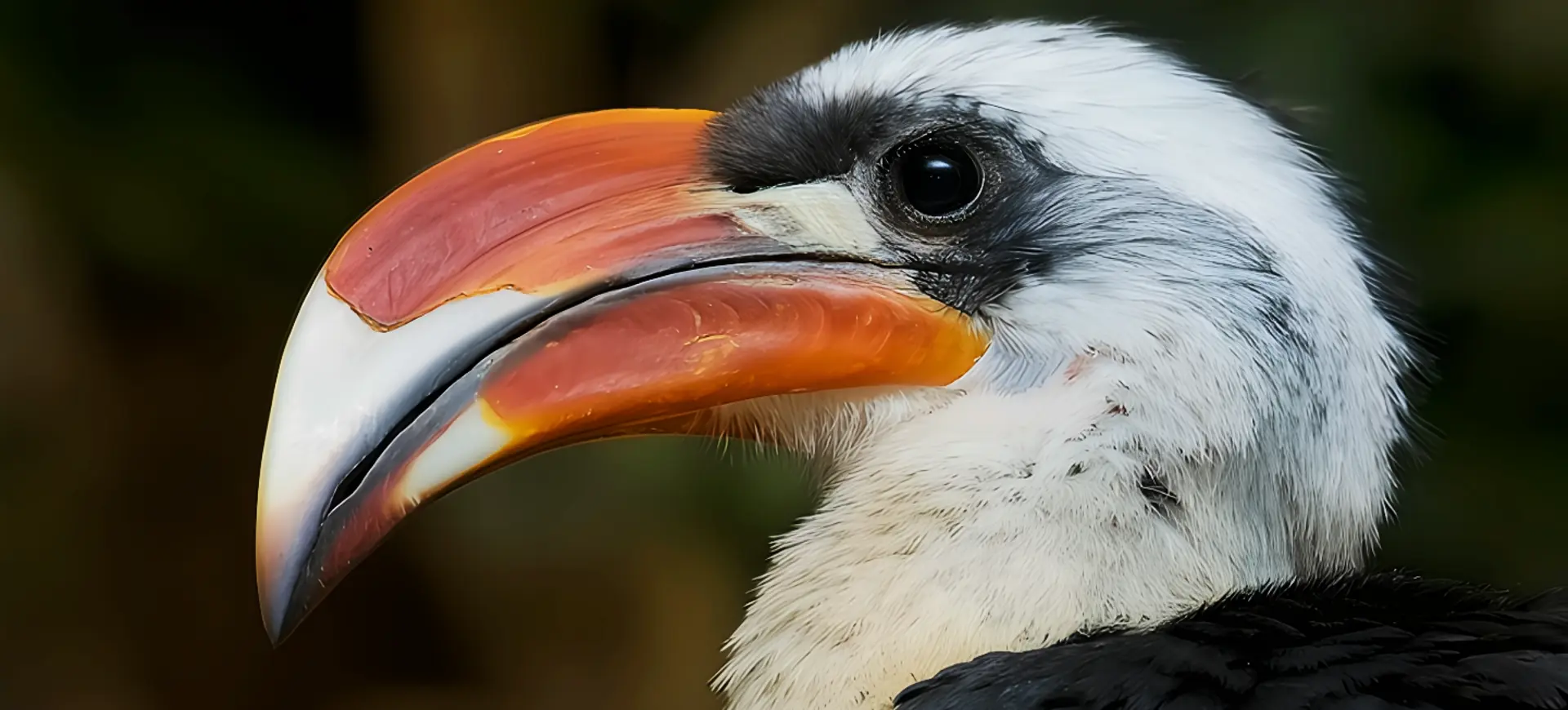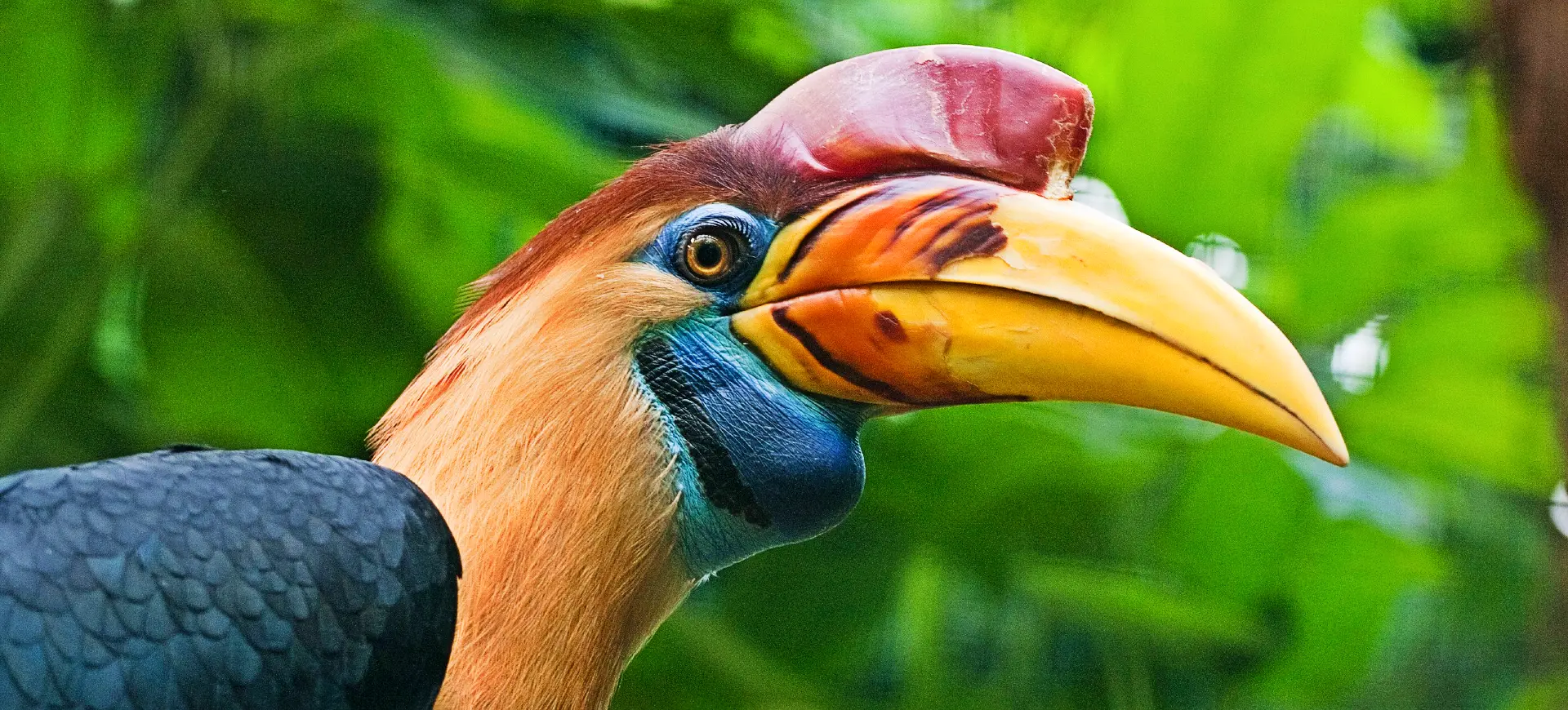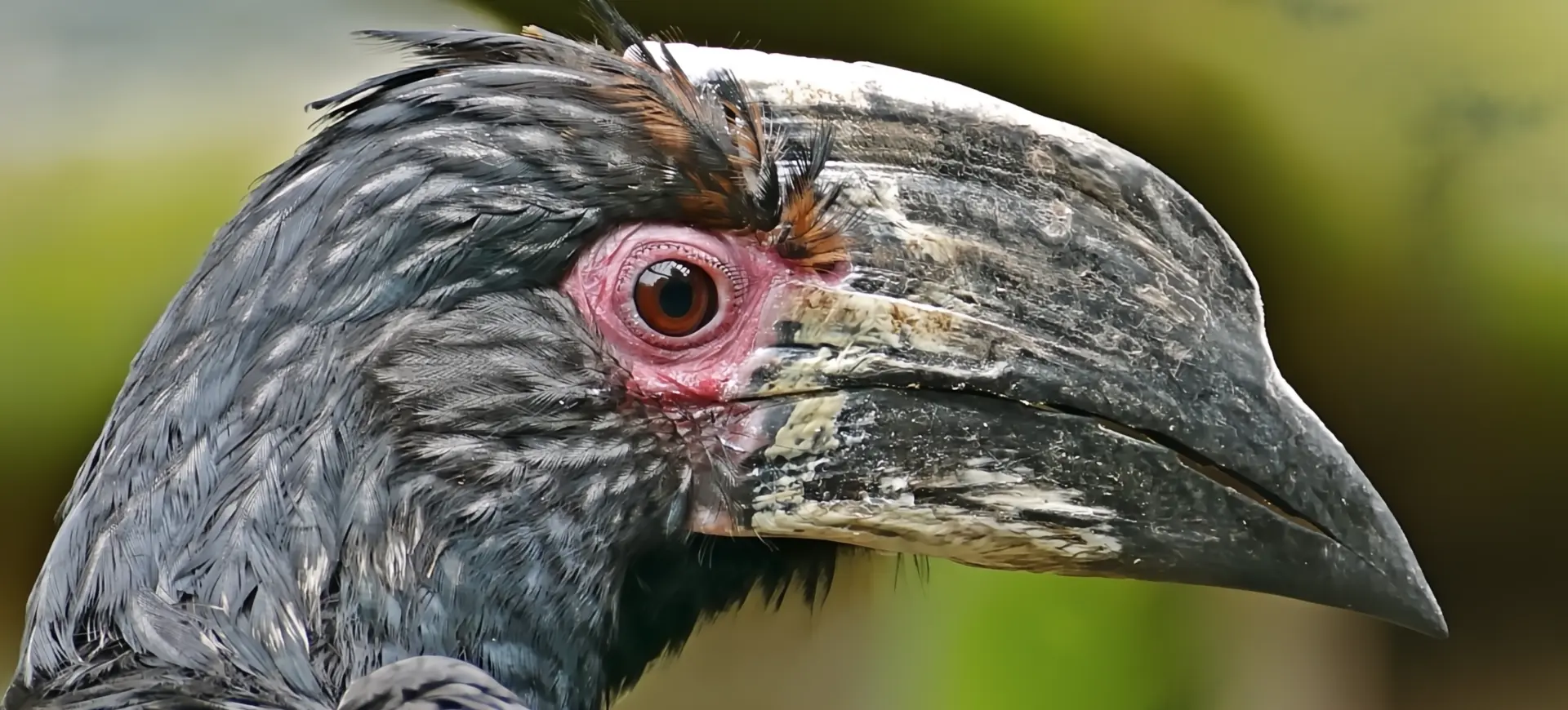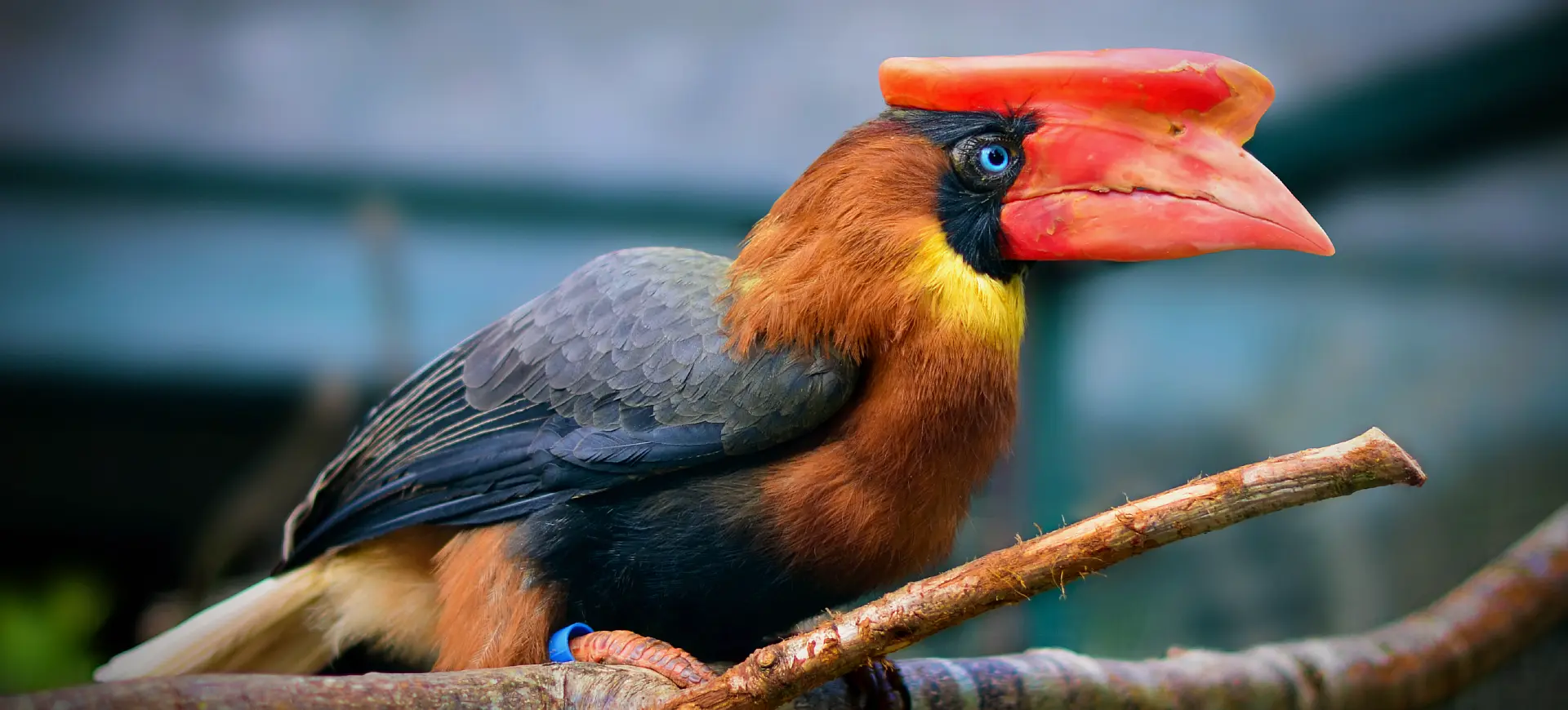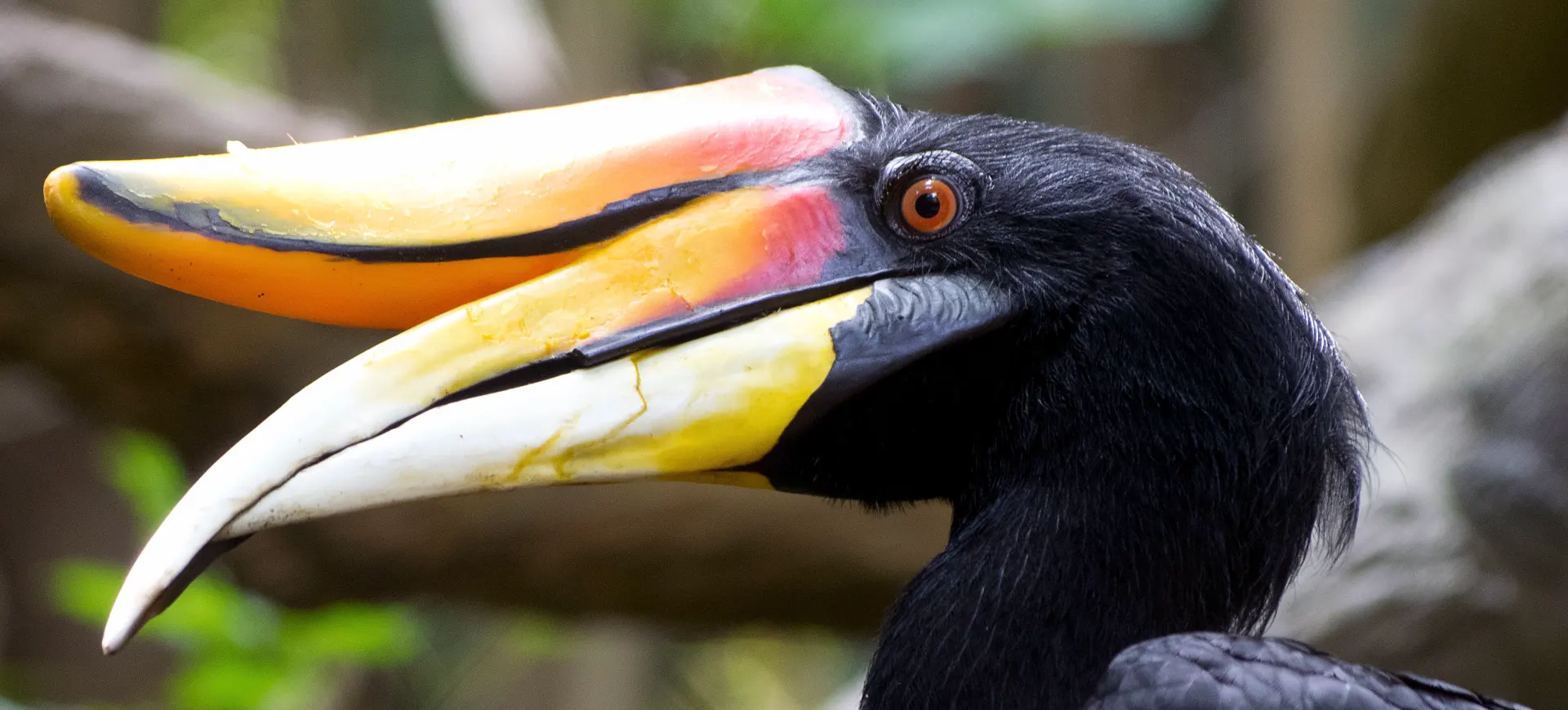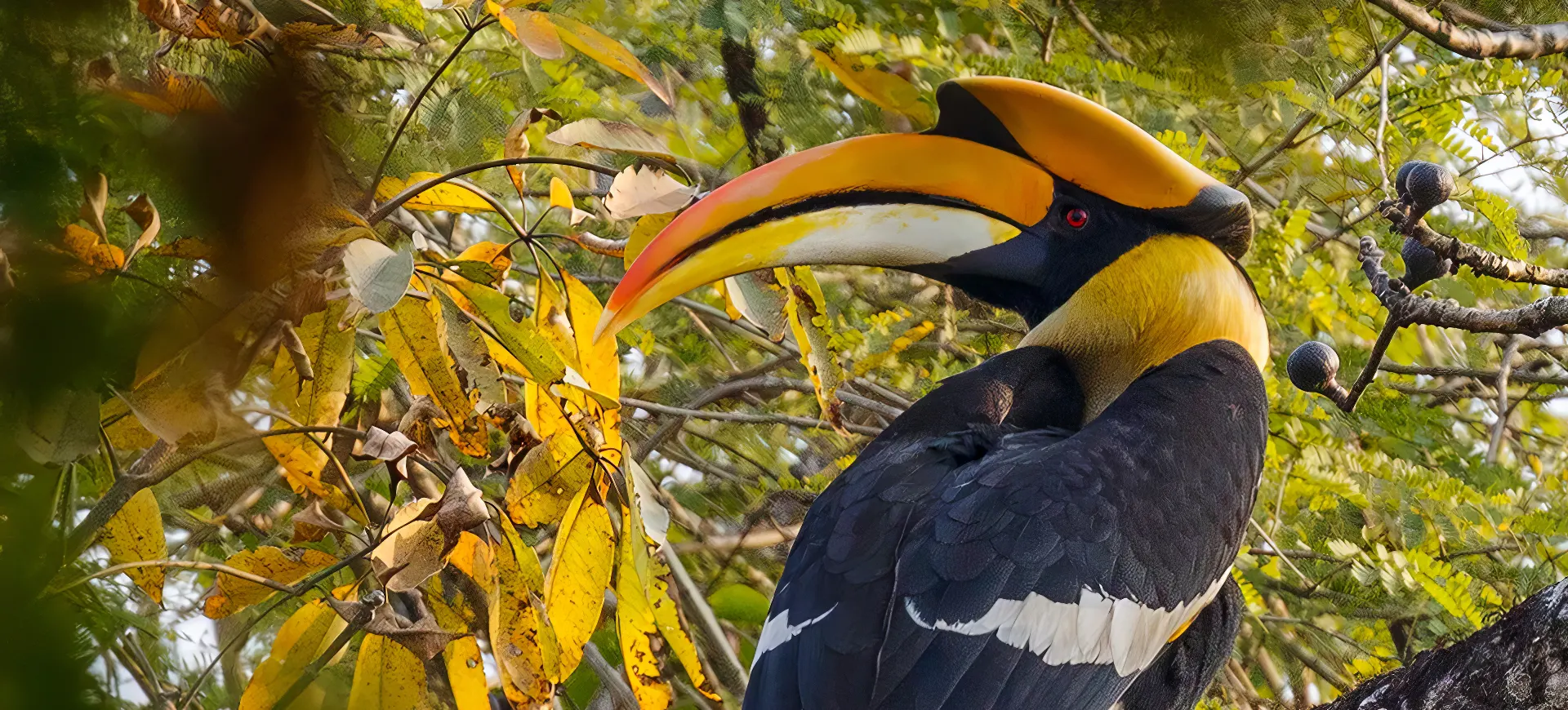Overview
The Wrinkled Hornbill, or Aceros corrugatus, is a captivating species of bird primarily known for its distinctive, horn-like casque atop its beak and wrinkled appearance, from which it gets its name. These hornbills are medium-to-large-sized birds native to the rainforests of the South East Asian region, especially across Borneo, Sumatra, and the Malay Peninsula. A deep, resonant call and colorful, elongated beaks characterize them. These birds are predominantly fruit eaters, making them critical seed dispersers in their ecosystems and, therefore, pivotal to maintaining the diversity and growth of their forest habitats.
These avian species are distinguished by sexual dimorphism, with males having a yellow-orange colored throat and a more prominent casque. In contrast, females sport a blue throat and a smaller casque. They are known for their monogamous pairing and unique nesting habits, where the female seals herself inside the tree hole nest with her eggs; the Wrinkled Hornbills make for an interesting species from the family of Bucerotidae. Their eye-catching casque, which continues to grow throughout their lifetime, is believed to be used in head-to-head combat to establish dominance.
The Wrinkled Hornbill faces a series of challenges threatening its existence. Human activities such as deforestation for palm oil cultivation, illegal pet trading, and hunting for their casque as trophies have caused a significant decline in their population.
Taxonomy
Kingdom
Phylum
Class
Order
Family
Genus
Species
Type
Physical Description:
The Wrinkled Hornbill is an exceptional bird with vibrant features. Males are typically larger than females and are easily distinguishable. The male has a rufous-brown head and neck, black plumage on the body, a large cream-colored, banana-shaped casque on the top of the bill, and a yellow-orange gular pouch. The casque is wrinkled and curved downward, resembling a horn. This casque serves as a resonating chamber amplifying calls. Their eyes are surrounded by bare skin, which is a bluish color.
On the other hand, the female Wrinkled Hornbill is similar to the male in size and appearance but with less striking features. They have black bodies, a blackish-blue throat and neck, and a slightly smaller casque than the males. Females also have a bluish-white ring around their eyes, making them distinct. The total length of a Wrinkled Hornbill, including the tail, ranges from 70–100 cm.

Lifespan: Wild: ~30 Years || Captivity: ~35 Years

Weight: Male: 4-7 lbs (1.8-3.2 kg) || Female: 3-5.5 lbs (1.4-2.5 kg)

Length: Male: 28-39 inches (70-100 cm) || Female: 28-39 inches (70-100 cm)

Height: Male & Female: 65-75 inches (165-190 cm)

Wingspan: Male & Female: 6 ft (1.8 m)

Top Speed: 30 mph (48 km/h)
Characteristic:
Native Habitat:
The Wrinkled Hornbill is native to the rainforests of Southeast Asia, predominantly across Borneo, Sumatra, and the Malay Peninsula. These birds prefer primary and secondary forests and are also found in fruit plantations, especially in areas with dense fruiting trees.
Their preferred habitat consists of dense, old-growth forests where they can find ample food and nesting sites. These hornbills are often found in lowland forests but can also adapt to hilly regions and are spotted at altitudes of up to 1,200 meters.
Climate Zones:
Biomes:
Biogeographical Realms:
Continents:
Diet:
Diet & Feeding Habits:
Wrinkled Hornbills are primarily frugivorous (fruit-eating) birds and strongly prefer figs. They play a crucial role in their ecosystem as seed dispersers, contributing to the propagation and diversity of plant life in their habitats. Their long beaks help them reach fruits on slender branches that can’t hold their weight, and they are known to ‘toss’ the fruits into the air and catch them in their mouths in a dramatic feeding style.
Occasionally, they also supplement their diet with small animals and insects. This includes a variety of invertebrates, small birds, and even small mammals when the opportunity arises. Their beaks can crunch shells and hard exteriors, allowing them to access a broader range of food sources.
Mating Behavior:
Mating Description:
Wrinkled Hornbills have fascinating mating behavior. They are monogamous and form long-term pair bonds. The breeding season generally commences in January and continues until April or May. Before mating, a courtship display is observed where the male and female engage in mutual preening and bill-grappling.
The most notable characteristic is their unique nesting behavior. Once the female lays her eggs, she seals herself inside a tree hole using a combination of feces, fruit pulp, and mud. The seal has a small slit through which the male feeds her and the chicks once they hatch. This behavior is thought to protect the eggs and chicks from predators. When the chicks are ready to fledge, the female breaks out of the nest and, together with the male, reseals the hole until the chicks are ready to leave.
Reproduction Season:
Birth Type:
Pregnancy Duration:
Female Name:
Male Name:
Baby Name:
Social Structure Description:
Wrinkled Hornbills are typically solitary or live in small family groups consisting of the mating pair and their offspring. They are territorial and defend their feeding and nesting areas from other hornbills. During the day, they forage across their territory; at night, they roost high in the trees. While not social, they engage in mutual preening as part of their bonding behavior.
Groups:
Conservation Status:
Population Trend:
The exact number of Wrinkled Hornbills in the wild is unknown. However, the population has declined due to severe habitat loss, hunting for their casque, and illegal pet trade. As they require large areas of undisturbed forest, fragmentation of their habitat significantly affects their population dynamics.
Their slow reproduction rate, with only one or two chicks fledging annually, makes it difficult for the species to recover quickly from declines. Moreover, their specific dietary requirements and the need for appropriate nesting sites make them susceptible to changes in their environment.
Population Threats:
The major threats to Wrinkled Hornbill’s population include habitat loss, hunting, and illegal pet trade. Habitat loss due to deforestation for timber extraction and palm oil cultivation has led to severe fragmentation of their habitats. As these birds depend on extensive, intact forests for survival, this poses a significant threat to their population.
Hunting for their casque, prized as a trophy, and trapping for the illegal pet trade also contribute to their population decline. Moreover, the impact of climate change on their forest habitats could potentially lead to changes in food availability, further threatening the species.
Conservation Efforts:
Efforts to conserve the Wrinkled Hornbill include habitat protection and legislation against hunting and trading. Several of their habitats fall under protected areas, providing some security level. However, enforcement of these protections can be challenging.
Organizations like the IUCN and BirdLife International are involved in efforts to monitor and protect the species. Captive breeding programs are also in place in various parts of the world to help bolster the population. Additionally, research is ongoing to better understand their ecology and develop more effective conservation strategies.
Additional Resources:
Fun Facts
- The casque on a Wrinkled Hornbill’s beak continues to grow throughout its lifetime.
- Female Wrinkled Hornbills seal themselves inside the nest to protect their eggs and chicks, relying entirely on their mates for food during this period.
- The Wrinkled Hornbill is known for its dramatic feeding style, tossing fruits into the air and catching them in their mouth.
- The resonant call of a Wrinkled Hornbill can be heard over a mile away, thanks to the amplifying effect of their casque.
- They play a significant role in their ecosystem as seed dispersers, contributing to forest diversity and growth.
- Wrinkled Hornbills have a relatively long lifespan, living up to 35-40 years in the wild and even longer in captivity.
- They are a monogamous species and tend to form long-term pair bonds.
- The male Wrinkled Hornbill has a vibrant yellow-orange gular pouch, whereas the female’s pouch is blue.
- Due to their dependence on fruit, these birds travel great distances daily for food.
- Despite being proficient flyers, they prefer hopping from branch to branch inside the forest canopy.





